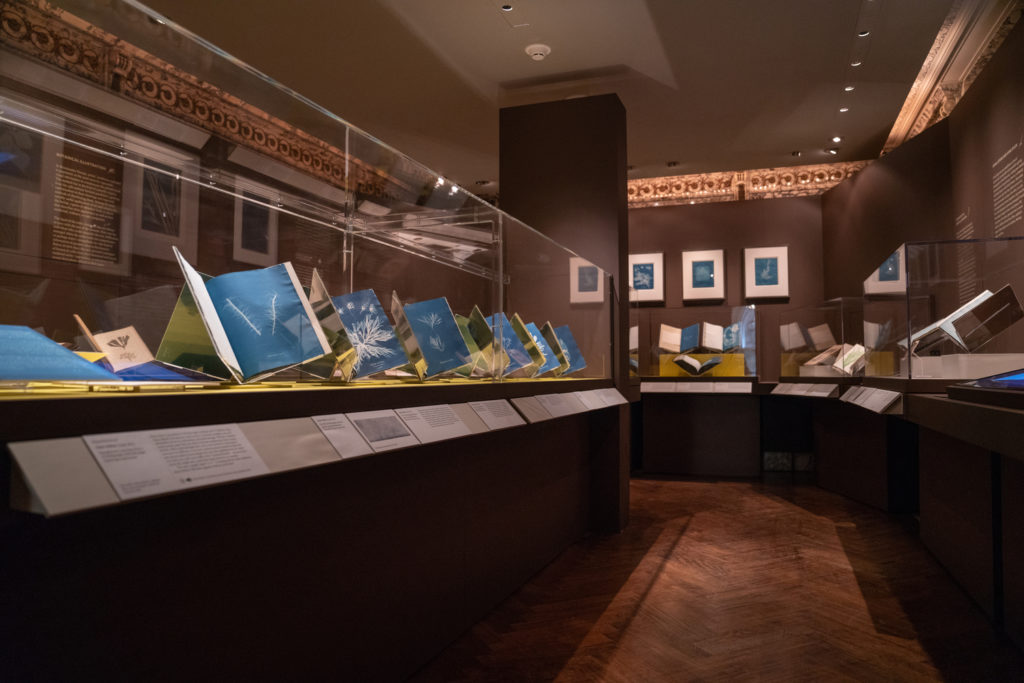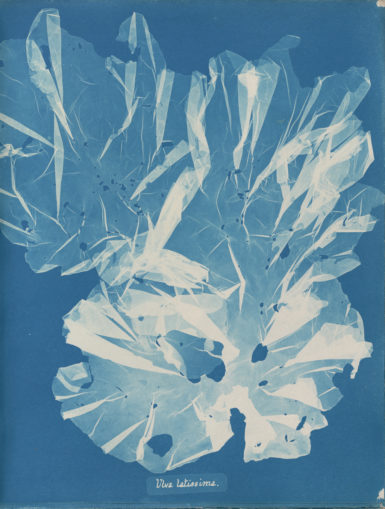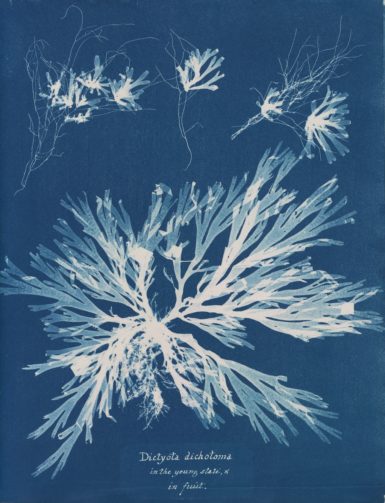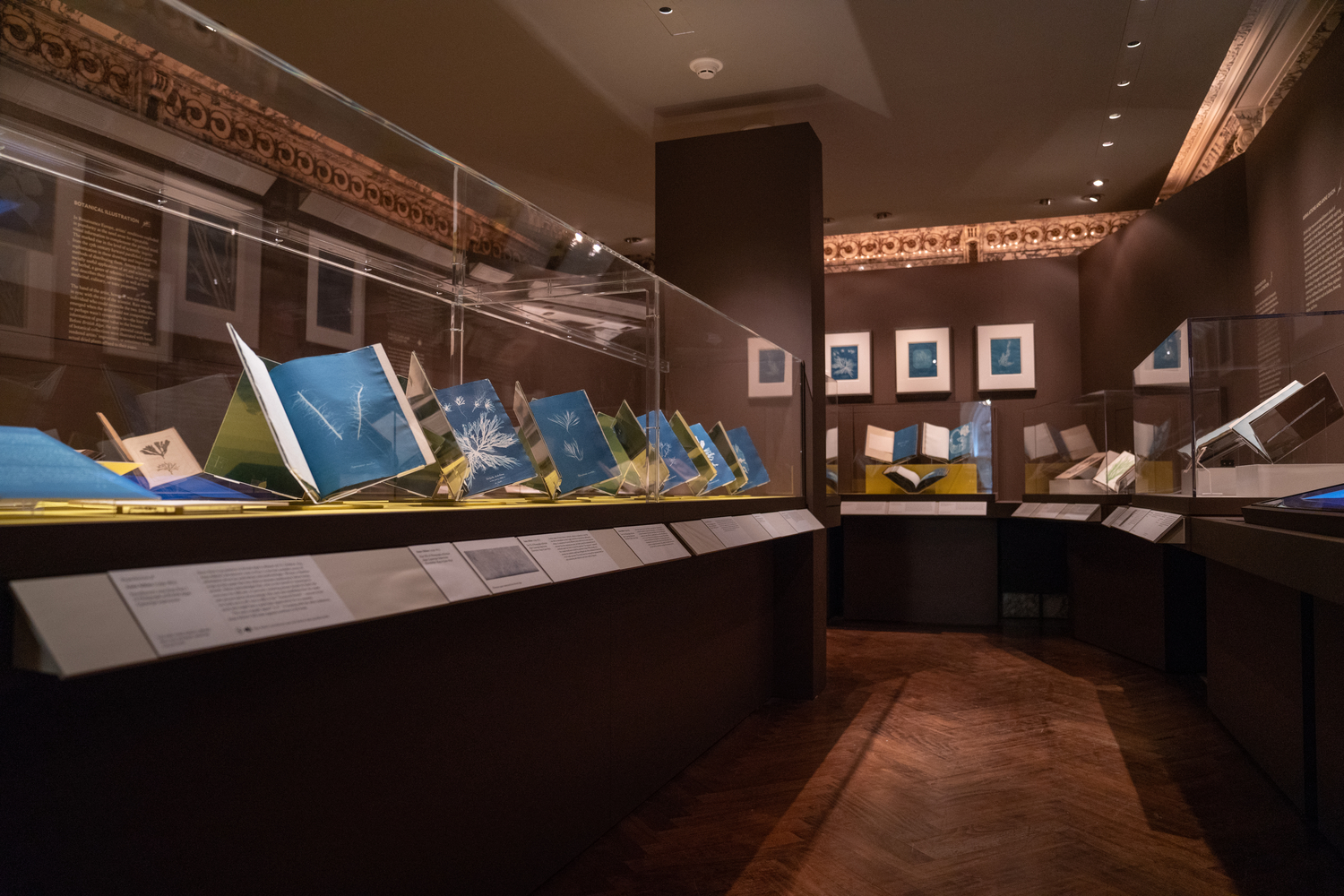[ad_1]

Installation view of “Blue Prints: The Pioneering Photographs of Anna Atkins” at the New York Public Library.
COURTESY THE NEW YORK PUBLIC LIBRARY
She was one of the most prolific photographers of the 19th century, and she created what is now believed to be the first book illustrated solely with her medium of choice. She was also, for the nearly 150 years since her death, forgotten or otherwise ignored. But all that has started to change as Anna Atkins and her three-volume tome Photographs of British Algae (1843) are finally getting the attention they deserve.
“She never sought recognition for her work, but I don’t think she wanted to remain anonymous,” said Joshua Chuang, a curator—along with photography scholar Larry Schaaf—of “Blue Prints: The Pioneering Photographs of Anna Atkins,” an exhibition now on view at the New York Public Library. “[But] because these pictures don’t look like photographs, and because she deposited them largely in natural history collections, these weren’t the ones you’d consult if you were writing a history of photography. It was easy for her to get overlooked.”

Anna Atkins, “Ulva latissima,” from Volume III of Photographs of British Algae: Cyanotype Impressions, 1853, cyanotype.
COURTESY SPENCER COLLECTION, THE NEW YORK PUBLIC LIBRARY, ASTOR, LENOX, AND TILDEN FOUNDATIONS
“Blue Prints”—with a wealth of Atkins’s cyanotype prints created via a cameraless photographic process on chemically treated paper—has been positioned as the first survey devoted to the Victorian-era English artist, and it has served as a welcome introduction to her work. According to Chuang, the library’s senior curator of photography, the show simply had to happen—after the institution’s acquisition of the third volume of Atkins’s Photographs of British Algae in 2016.
“This is one of the best things that the library has,” Chuang said. “Adding that to the collection spurred this project, and there hadn’t been a focused show on her work done in a very, very long time.”
Atkins, who gained entrée into the English scientific community by way of her father (a chemist and mineralogist), was enamored of the natural world. Her works in the show, on view through late next month in an intimate room on the grand library’s ground floor, teem with delicate, serpentine forms. With their sinews splayed in all directions, her specimens seem to have been captured in the midst of an elaborate dance.
Atkins’s algae cyanotypes are exhibited with some of her later images of different plants (from Cyanotypes of British and Foreign Ferns, which Atkins created with botanist Anne Dixon in 1853) as well as botanical illustrations by other artists from around the same time. Also included is a copy of Sun Gardens, a monograph that brought Atkins to the contemporary fore when it was published by Larry Schaaf in 1985.

Anna Atkins, “Dictyota dichotoma, in the young state & in fruit,” from Part XI of Photographs of British Algae: Cyanotype Impressions, 1849-1850, cyanotype.
COURTESY SPENCER COLLECTION, THE NEW YORK PUBLIC LIBRARY, ASTOR, LENOX, AND TILDEN FOUNDATIONS
The exhibition includes delightful details about Atkins’s process—from her preference for a certain kind of paper (J. Whatman Turkey Mill) to her intention to share, rather than sell, Photographs of British Algae among her botanically inclined friends. Also included is a note about the absence of Atkins’s full name in her book (it was credited to “A.A.”)—an omission that likely kept her from becoming more famous in her day.
Notwithstanding her many years of obscurity, Atkins’s impact on photography today was made apparent in “Anna Atkins: Refracted,” a complementary exhibition at the library that closed last weekend. On view were works by 19 contemporary artists who were invited to show new or existing work in response to Atkins’s legacy.
Organized by Chuang and Elizabeth Cronin, an associate curator at the NYPL, the “Refracted” show included Penelope Umbrico’s techno-dystopian Sun/Screen/Scan (2018), a set of inkjet prints created with scans of iPhones, laptops, flip phones, and other screens that were processed with a cyanotype filter. Roy Arden’s cyanotypes and photograms looked very similar to Atkins’s, though with a focus on commercial packaging in the place of algae. Ulf Saupe’s Res Navalis (2017)—a title that loosely translates to “sea critters”—depicted floating plastic bags that, at first glance, resemble ocean organisms.
Atkins’s work is hard to fit into the categories laid out by historians of early photography. While prominent figures like Henry Fox Talbot and Louis Daguerre’s focused largely on portraits and landscapes, Atkins’s project is “neither of those things,” Cronin said. “That’s what I think people like about it.”
For Chuang, there’s still more investigating to be done. “She didn’t write her own narrative,” the curator said of an artist whose tale holds out more for inquiry. “The fact that we know so little about her makes contemporary audiences want to inhabit her story.”
[ad_2]
Source link

